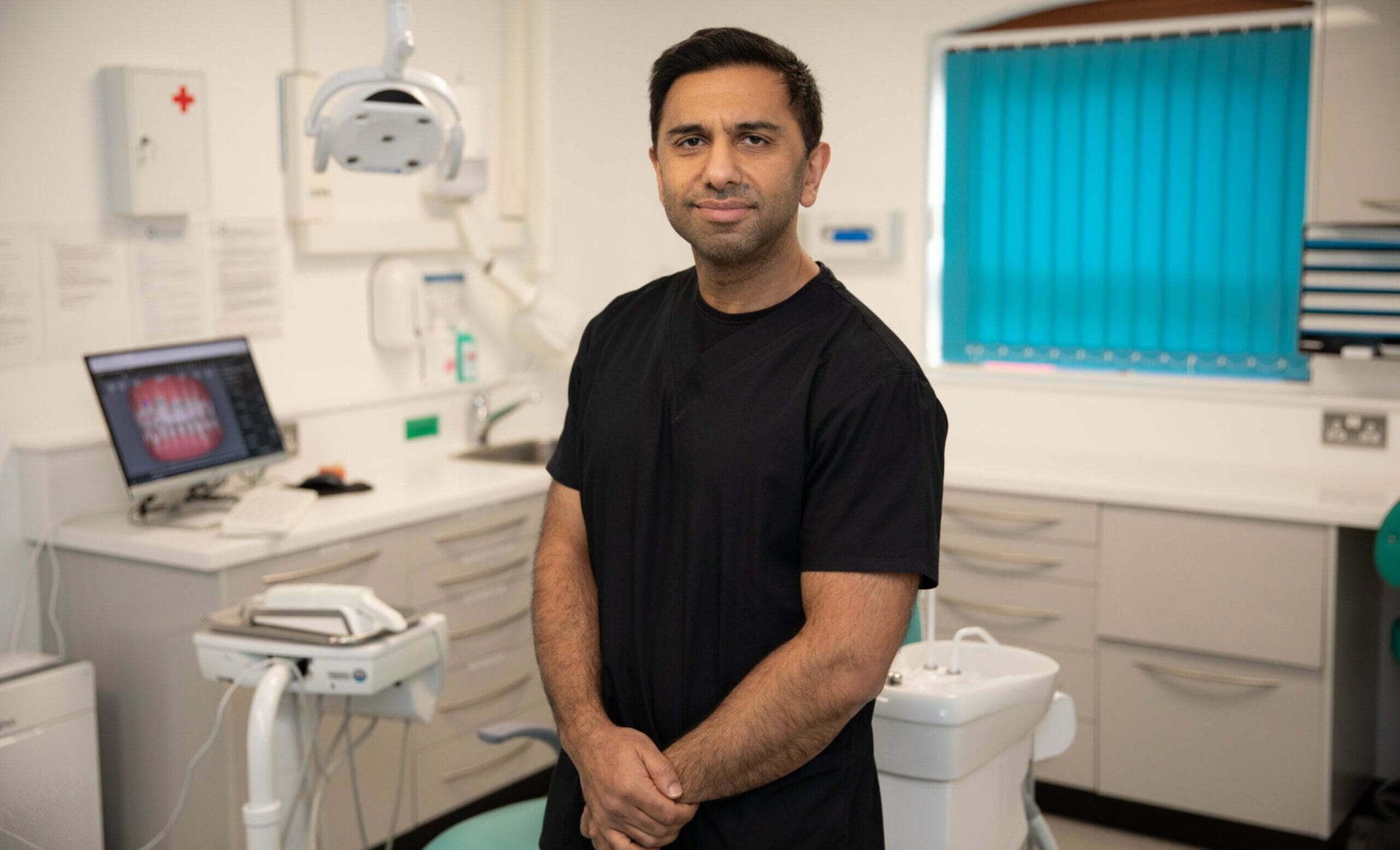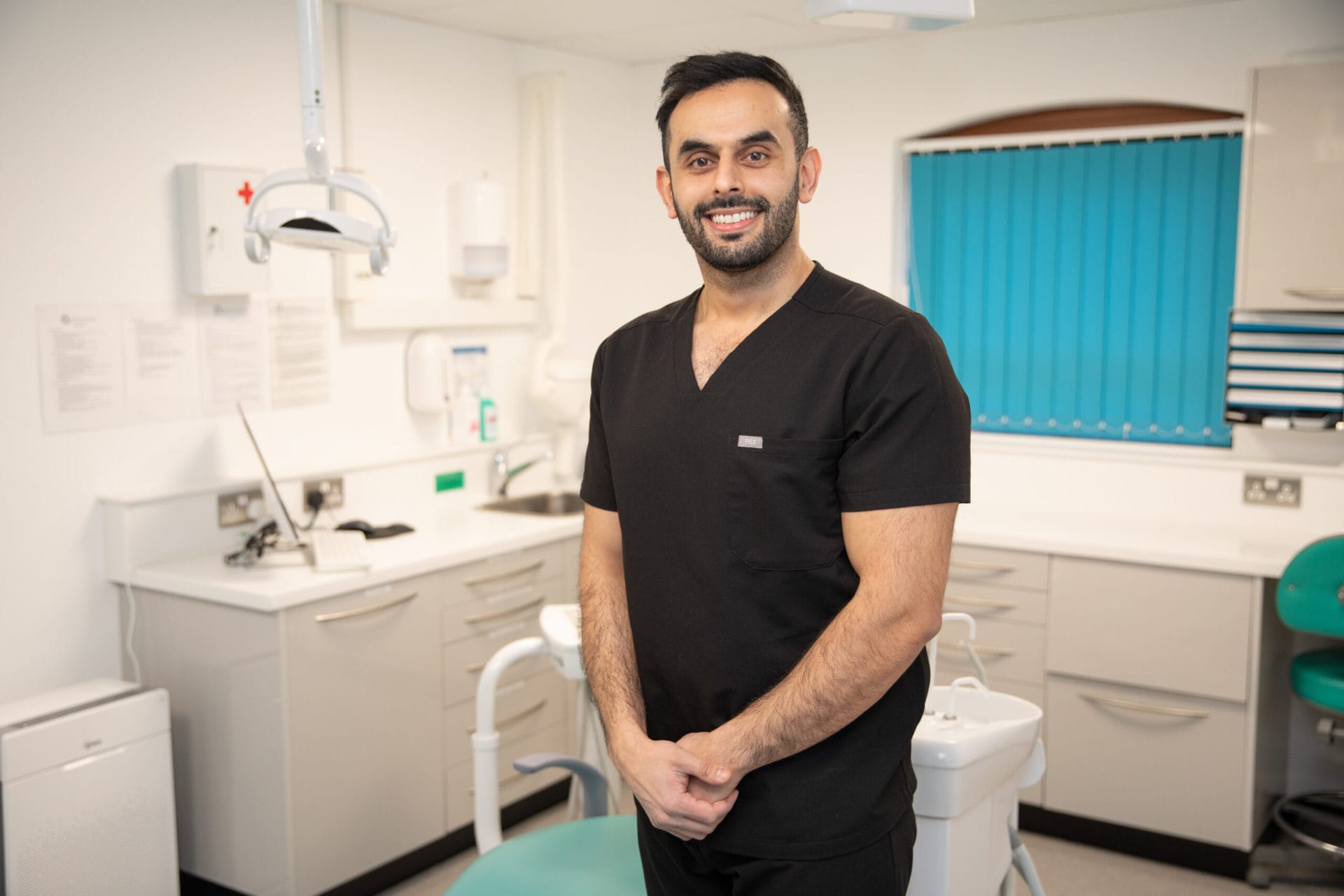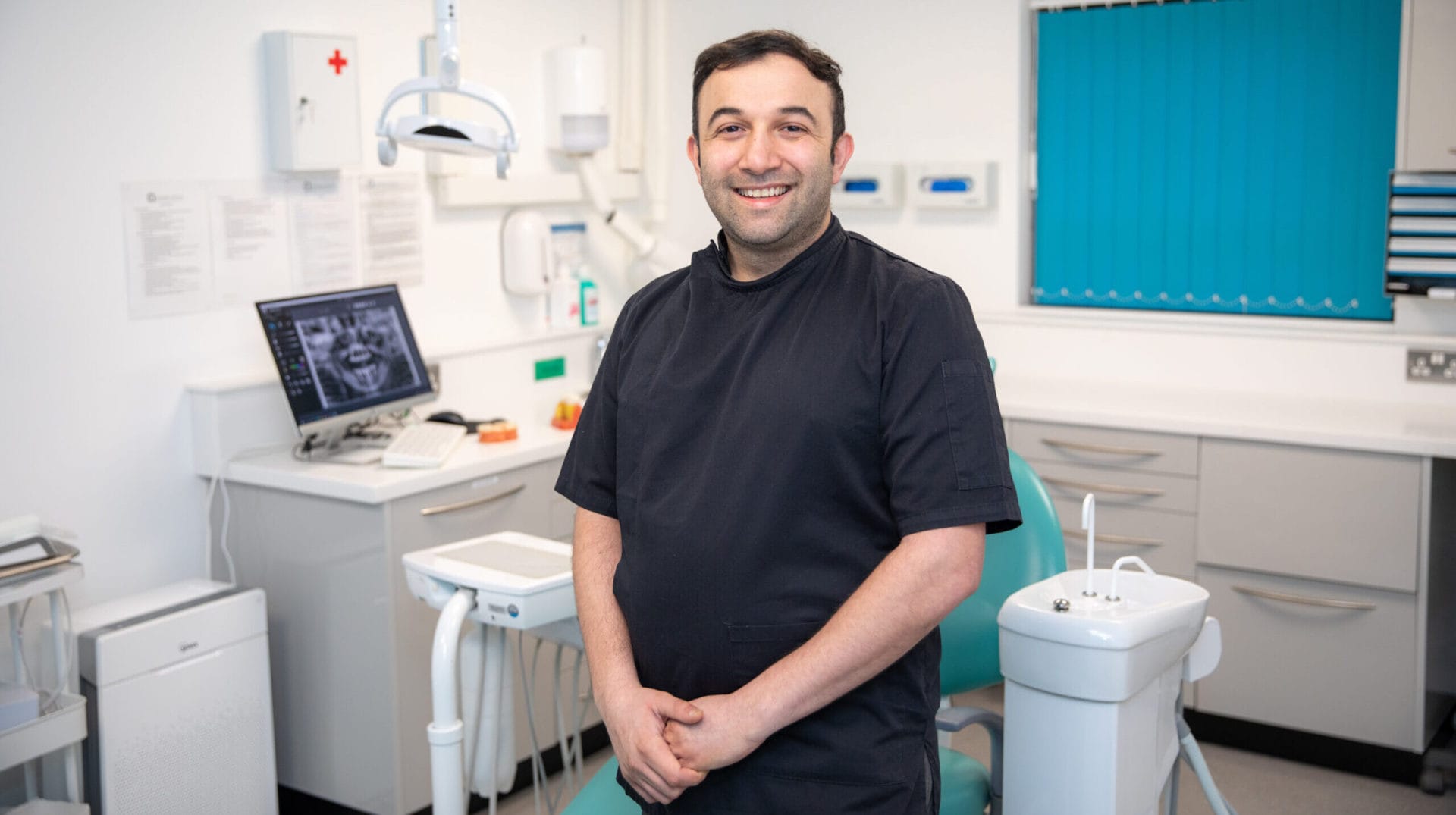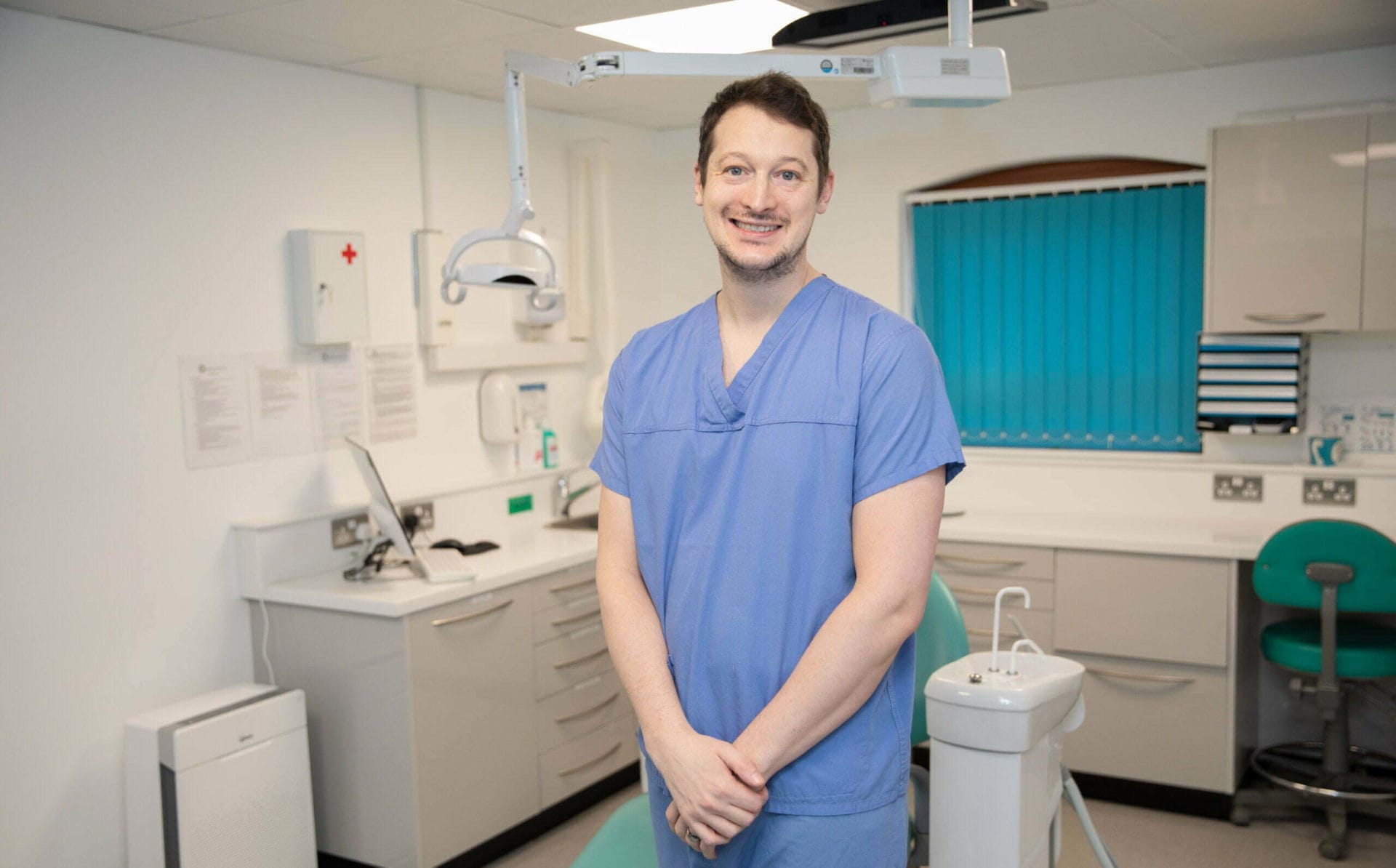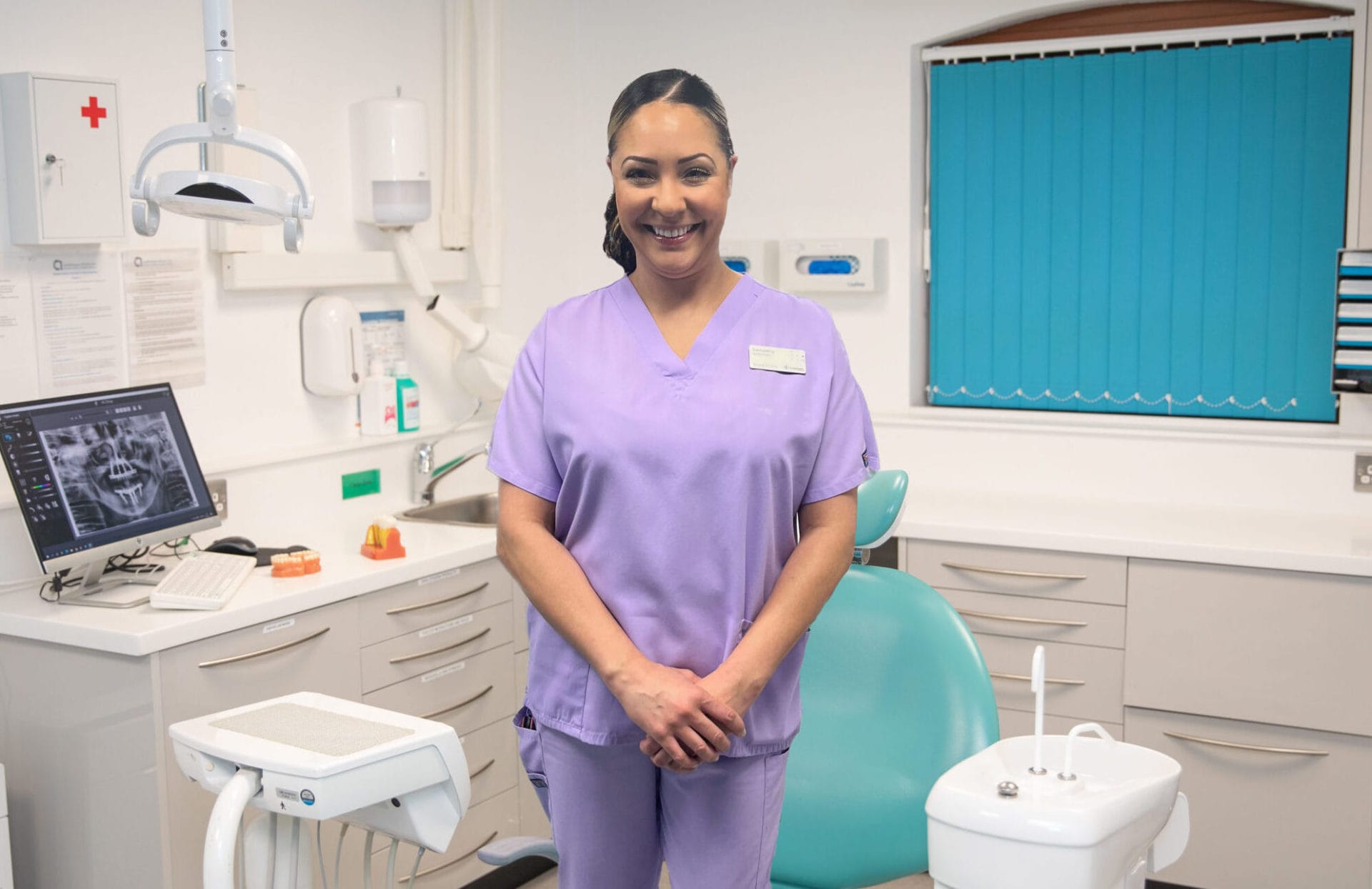Dental bridges in Leeds
Our expert team is here to help you achieve a confident smile with high-quality dental bridges. We focus on professional, personalised care to ensure you get the best results – there’s no better dental practice to trust with your dental bridge.
- Durable
- Natural-looking
- Precise
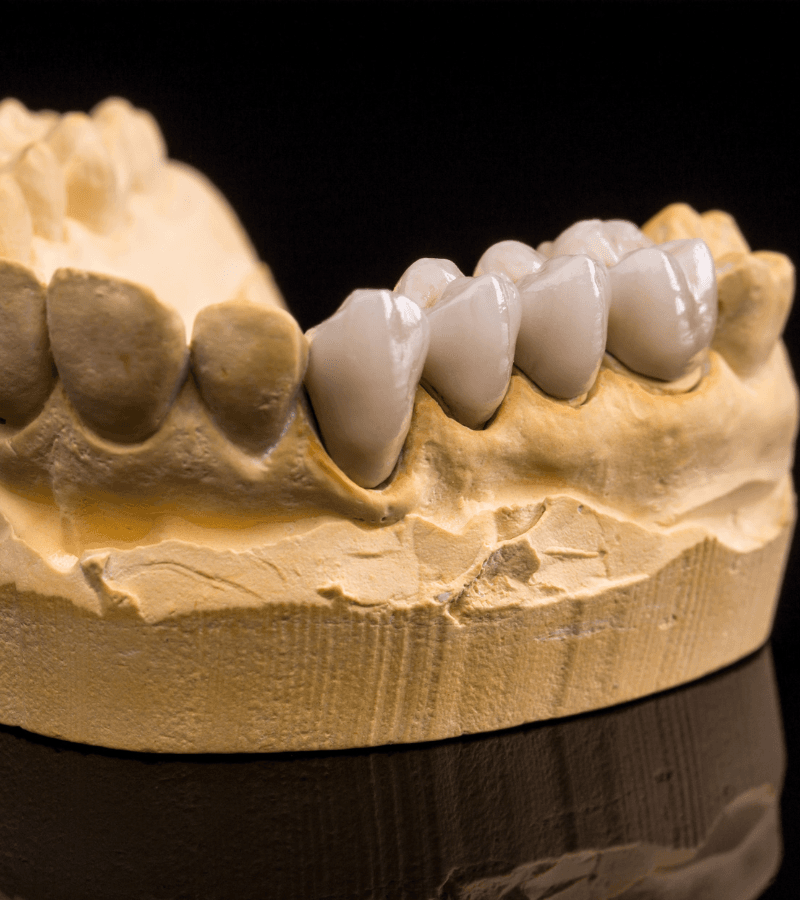
Trusted
dental practice
Easy-to-book
consultations
Affordability
0% finance available
Dental bridges - quick overview
- Restores missing teeth
- Durable & long-lasting
- Improves bite & speech
- Prevents teeth shifting
- custom-made for a natural look
Boost your confidence with dental bridges today
Dental bridges are a straightforward way to replace missing teeth, instantly improving your smile. They work by using crowns on the teeth next to the missing one to support a fake tooth that fills the gap. Unlike partial dentures, bridges are fixed in place, giving you a stable and secure solution that feels and looks natural.
We know how much missing teeth can knock your confidence. With a dental bridge treatment from us, you can bring back your smile. Book in for a consultation today.
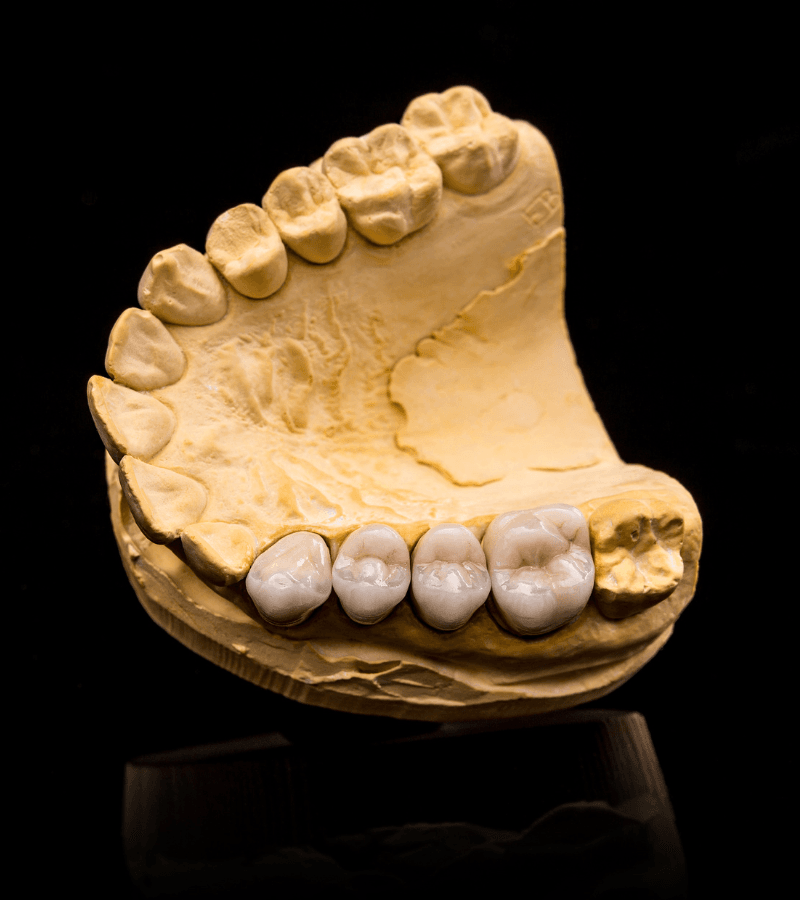
Who can benefit from dental bridges?
Ideal for people with missing teeth
Individuals struggling with chewing and speaking
Those wanting to prevent teeth shifting
People looking for a fixed alternative to dentures
Dental bridges treatment
What to expect

Consultation
Your dentist examines your teeth, discusses options, and takes impressions to plan your bridge.

Tooth preparation
The supporting teeth are shaped, and temporary bridges may be placed to protect them.

Bridge fitting
Your custom-made bridge is carefully fitted, adjusted, and cemented in place for a perfect fit.

Aftercare
Regular check-ups and good oral hygiene help ensure your bridge stays strong and lasts for years.
Get affordable dental bridges in Leeds
Dental bridges are a reliable solution for replacing missing teeth and restoring your smile. At Aesthetique, we offer high-quality, custom-made bridges at competitive prices to improve both function and appearance. For a free consultation and detailed pricing, contact our team today.
Maryland bridge
from £595.00 / unit
Bridges
from £625.00 / unit
Bridge recement
from £80 + emergency fee
The benefits of dental bridges
If you’re looking to restore your smile after the loss of one or more teeth, dental bridges could be the answer.
Firstly, they provide a cosmetic dental solution that looks and feels natural, seamlessly blending with your existing teeth to enhance your smile and boost your confidence. Beyond looks, dental bridges play a big role in improving oral functionality. They enable you to chew and speak more effectively, distributing the force in your bite properly to avoid extra stress on other teeth.
They also help in maintaining the shape of your face, preventing the sunken look that can occur with tooth loss. Even your remaining teeth will benefit, staying properly aligned and preventing them from drifting into the gap left by a missing tooth. By protecting the integrity of your existing teeth and gums, dental bridges are a durable and effective solution for long-term oral health.
How do dental bridges work?
Dental bridges work by covering a gap with a fake tooth that is supported by dental crowns on either side. The process starts with a detailed check-up to make sure your teeth and gums are ready for the procedure. If the teeth next to the gap – known as abutment teeth – are strong and healthy, you’re all set to go.
Next up, those abutment teeth get a bit of a makeover. A small amount of enamel is removed so they can comfortably hold a crown. Then, an impression of these teeth is made and sent off to a lab where your custom bridge is crafted by experts.
While you wait for your permanent bridge, you won’t be left with a gap. A temporary bridge is put in place to protect your teeth and keep you smiling. When your new bridge is ready, you’ll come back in to have it fitted. We make sure everything looks good and feels right before fixing it permanently with a special dental cement. And just like that, your smile is whole again, ready for anything.
Frequently Asked Questions
Have questions about dental bridges in Leeds? Check our most common ones here or give us a call if you can’t find what you need.


Next step towards confidence
Your journey towards a complete and confident smile is just a conversation away. Reach out to our team of expert dental professionals for a personalised dental bridge consultation. With years of expertise under our belts, we’re dedicated to providing tailored services that meet your unique needs and put your mind at ease.
We understand the importance of a decision like this and are here to guide you through every step with compassion and care. Let us help you rediscover the joy of a full smile. Contact us today to start your journey towards a brighter, more confident you.
Trusted by patients in Leeds


Bridges are usually made of a precious metal. If the bridge will show when you talk or smile, we bond porcelain to the base to give a natural looking finish. Occasionally, other non-precious metals are used in the base to boost strength.
Although a bridge may seem costly, they can be a wise investment that will give many years of good service. They also improve your appearance and bite. A bridge uses the considerable skill of the dentist and technician and, in this way, is similar to ordering a piece of handmade jewellery.
Number of teeth replaced: Single-tooth bridges are generally cheaper than multiple-tooth ones.
Material used: Porcelain or zirconia bridges are more expensive than metal alloy bridges.
Additional procedures: If you need extractions or other dental work before the bridge placement, it adds to the cost.

